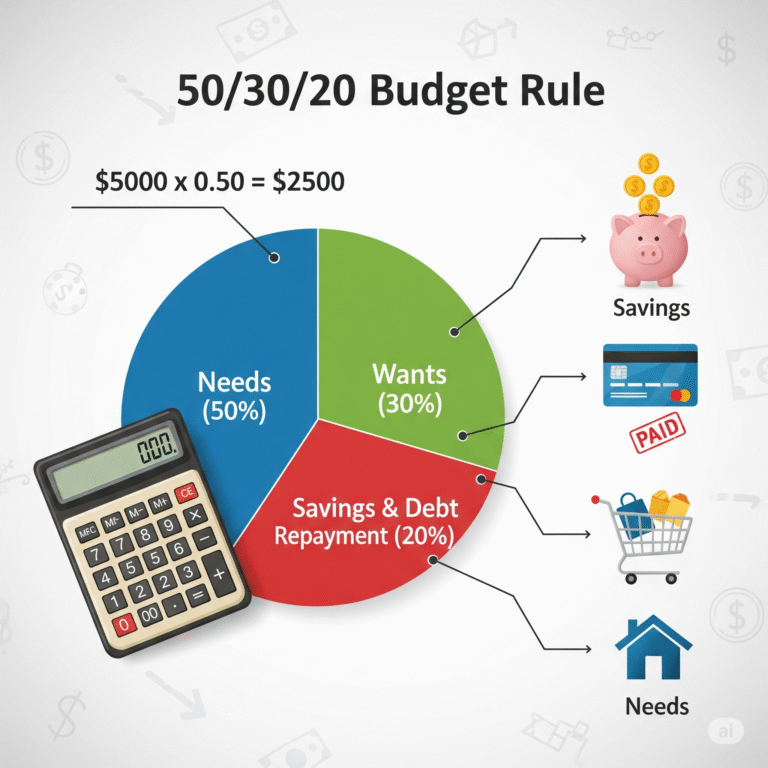Interest Calculator
What is Compound Interest?
Compound interest is one of the most powerful concepts in personal finance and investing. Unlike simple interest, which is calculated only on the original principal, compound interest allows your money to grow on both the initial amount and the interest it has already earned. Over time, this creates exponential growth in savings and investments.
In other words, the longer you invest and the more frequently your interest is compounded, the faster your money multiplies. That’s why Albert Einstein reportedly called compound interest the “eighth wonder of the world.”
How Does Compound Interest Work?
Compound interest works by reinvesting your earned interest back into the principal. Each period, the new balance becomes larger, and therefore the next interest payment also increases.
The formula for compound interest is:
A = P (1 + r/n)^(nt)
Where:
- A = Final amount
- P = Initial investment (principal)
- r = Annual interest rate (decimal form)
- n = Number of compounding periods per year
- t = Number of years invested
Example of Compound Interest Growth
Imagine you invest $10,000 at an annual interest rate of 5%, compounded monthly, for 10 years.
- Principal (P): $10,000
- Rate (r): 0.05
- Compounding frequency (n): 12
- Time (t): 10 years
Using the formula, the investment grows to about $16,470 without any additional contributions.
Now, if you add just $100 every month, your investment would grow to nearly $33,000. This shows the incredible effect of consistent contributions combined with compounding.
Why Compounding Frequency Matters
The more frequently interest compounds, the greater your return. For example:
- Annually: 1 compounding period per year
- Quarterly: 4 times per year
- Monthly: 12 times per year
- Daily: 365 times per year
If two investors both save $10,000 at 5% interest for 10 years, the one with monthly compounding will earn slightly more than the one with annual compounding. Over decades, this difference becomes significant.
Adjusting for Taxes and Inflation
When planning investments, it’s important to factor in taxes and inflation.
- Taxes reduce your actual earned interest. For example, if you earn $1,000 in interest but pay 20% in taxes, your net gain is $800.
- Inflation reduces the real value of money. If inflation is 3% per year, your 5% return is effectively only 2% in purchasing power.
Our Interest Calculator lets you include both inflation and tax rates so you can see your real after-tax, inflation-adjusted returns.
How to Use the Online Interest Calculator
- Enter your initial investment (e.g., $5,000).
- Add your annual or monthly contributions.
- Choose the contribution timing (beginning or end of the period).
- Set your interest rate (%).
- Select compounding frequency (annual, monthly, daily, etc.).
- Enter your investment length (years and months).
- Optionally, include your tax rate and inflation rate.
- Click Calculate to see results and yearly breakdowns.
Real-Life Applications of Compound Interest
- Retirement Planning: Small, regular savings over decades can build a large retirement fund.
- Emergency Fund Growth: Keeping savings in a high-yield account ensures your cash grows with inflation.
- Education Savings: Parents can plan tuition funds by compounding contributions early.
- Debt Awareness: Credit cards also use compounding—but against you. Understanding compound interest helps you avoid debt traps.
Looking for other tools to help you manage your money? Explore our full suite of free Financial Calculators.
Frequently Asked Questions (FAQ)
1. What’s the difference between simple and compound interest?
Simple interest only applies to the original principal, while compound interest grows on both principal and previously earned interest.
2. Is monthly compounding better than yearly?
Yes, monthly (or even daily) compounding results in faster growth because interest is applied more often.
3. Can compound interest make me rich?
If you consistently invest over time, compound interest can create significant wealth due to exponential growth.
4. How do taxes and inflation affect my returns?
Taxes reduce your earnings, while inflation lowers purchasing power. That’s why it’s smart to check after-tax, inflation-adjusted results.
5. How much should I invest monthly to reach my goal?
Use the calculator to test different scenarios and see how small changes in contributions affect long-term wealth.
Final Thoughts
Compound interest is the secret to long-term wealth building. The earlier you start investing, the more powerful compounding becomes.
Use our Interest Calculator to experiment with different scenarios. Adjust for inflation, tax, and contributions to create a realistic investment plan.
💡 Start today—even small investments grow big over time thanks to compound interest.
Disclaimer: This calculator is for educational purposes only and should not be considered financial advice. Please consult a financial advisor before making decisions.






